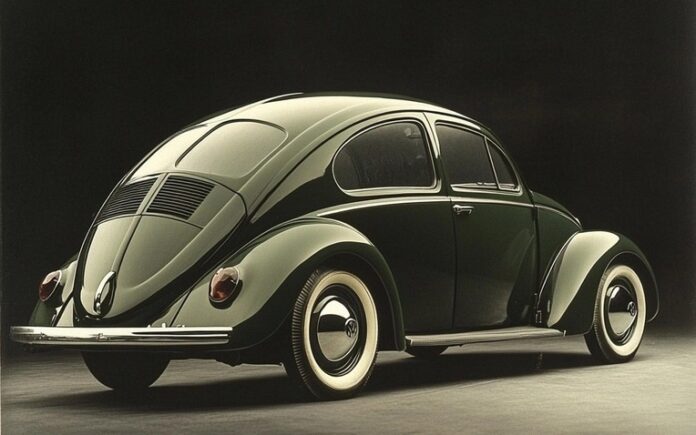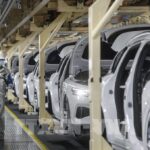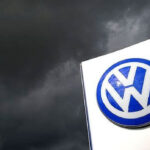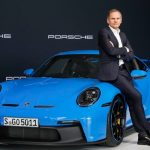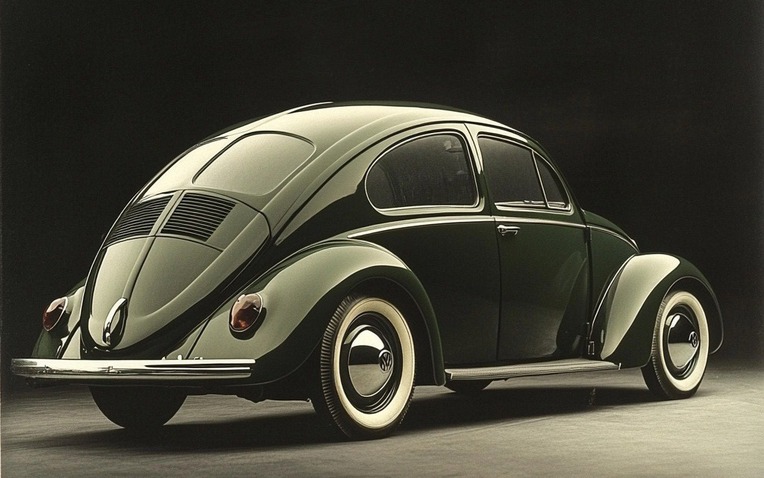
On May 28, 1937, in Germany, a small automobile company named “Volkswagen” was officially established.
The name, which translates to “People’s Car,” marked the beginning of a dramatic, tumultuous, and ultimately triumphant journey to becoming one of the largest automobile manufacturers on the planet.
Through wars, crises, and notorious scandals, the Volkswagen brand has maintained its central position in the global automotive industry.

Illustration created by AI.
A Car for the Masses
In the 1930s, automobiles were still a luxury item, accessible only to the upper classes in Europe and America.
However, in Germany, a different idea was taking shape: to create an affordable, user-friendly car that middle-class families could own.
With government patronage, the Volkswagen project was born as part of a comprehensive industrialization plan.
Ferdinand Porsche, the lead engineer chosen to lead the project, designed a prototype with rounded contours, a rear-mounted engine, and air-cooling—a design that would later become legendary as the Beetle.
This model was intended to be the affordable standard for all German citizens.
However, the plan was severely interrupted by the outbreak of World War II. The Volkswagen factory was converted to produce military vehicles for the Nazi regime, and dreams of a “people’s car” were temporarily shelved.
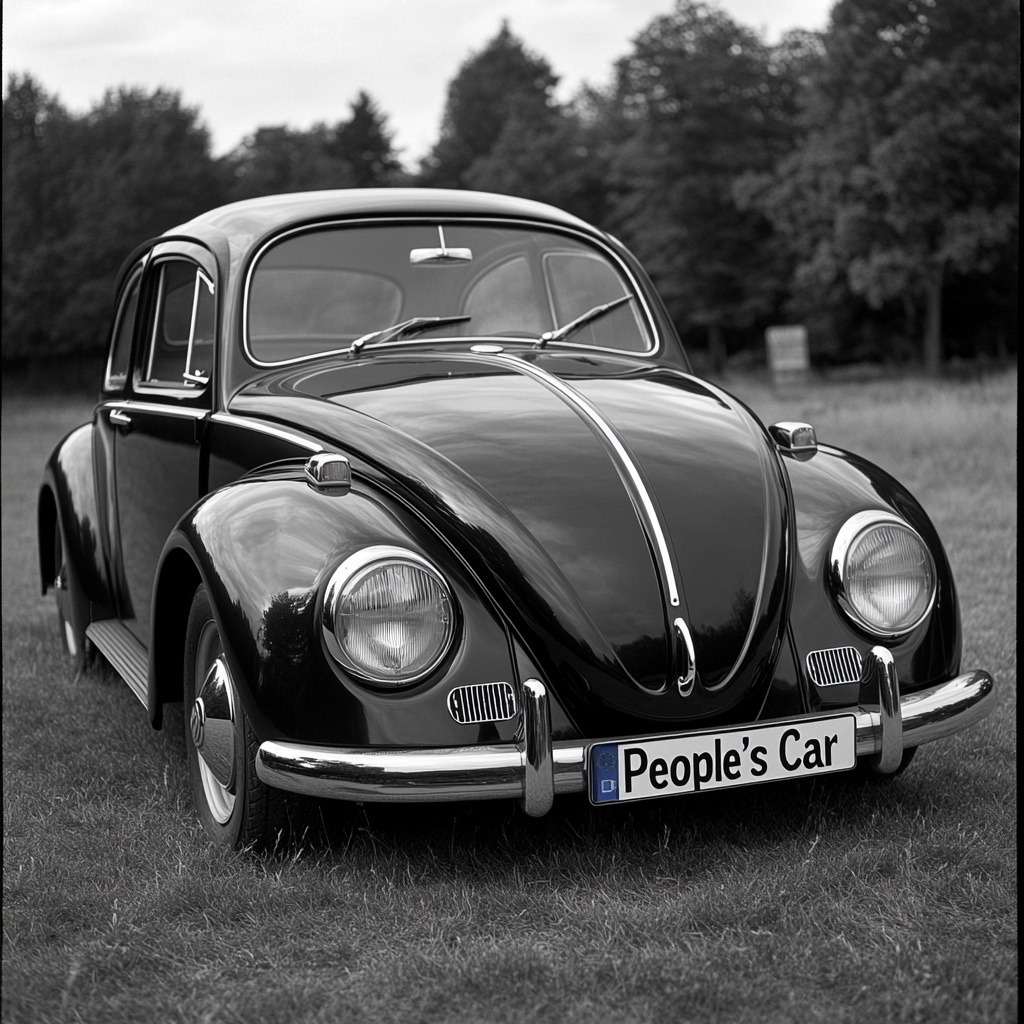
Illustration created by AI.
Rebirth After the War
Following Germany’s defeat in World War II, the Volkswagen factory in Wolfsburg fell into the hands of the Allied forces. No one expected that a brand associated with the Nazis could be resurrected—until a British officer named Ivan Hirst recognized the factory’s immense potential.
Under the management of the British occupation forces, the Beetle production line was restored and officially restarted in the late 1940s.
From there, the VW Beetle—with its unique design, durable engine, and affordable price—gradually won over consumers in Europe and later, North America.
By the late 1950s and early 1960s, the VW Beetle had become a global icon. No one could have predicted that a design conceived during wartime would become synonymous with “freedom” for Western youth.
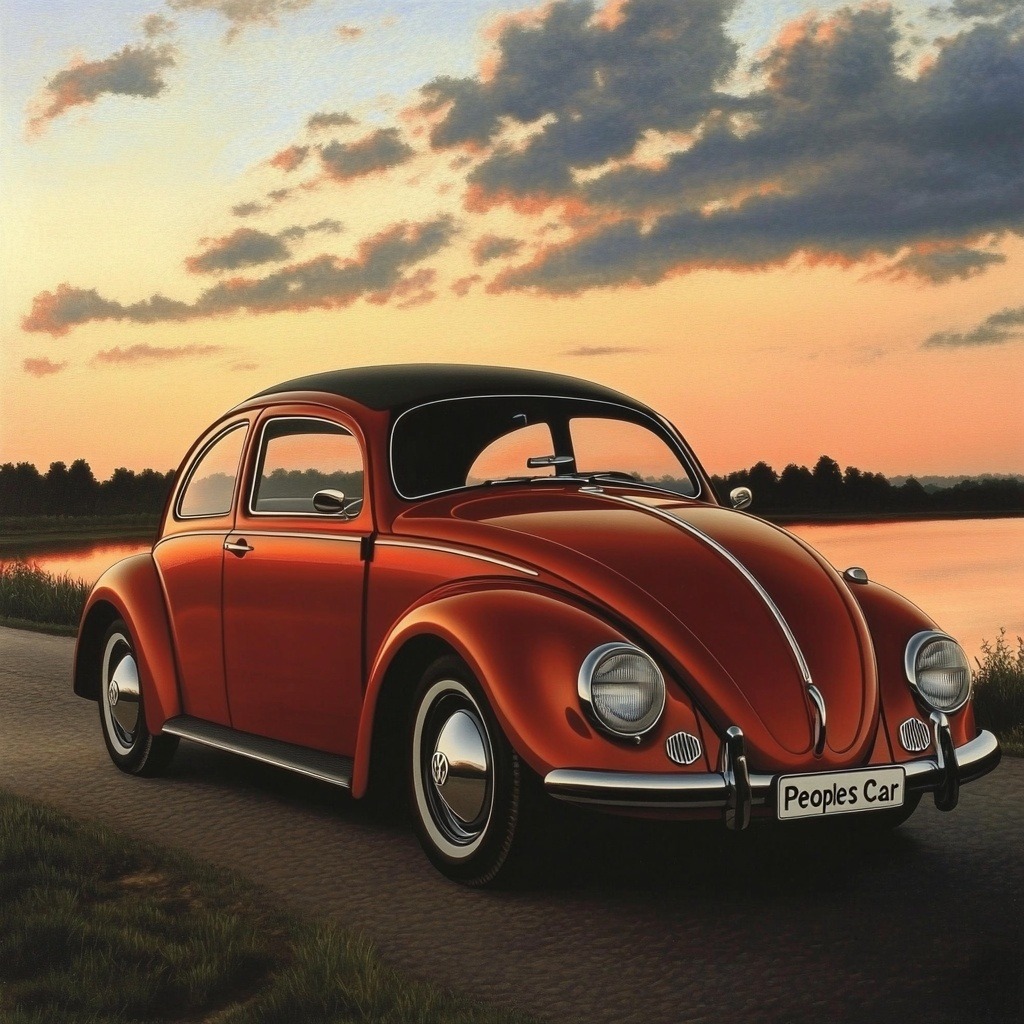
Illustration created by AI.
Peak and Turning Point
In 1972, the Volkswagen Beetle surpassed the Ford Model T to become the best-selling car in the world. However, its reign wouldn’t last forever.
The oil crisis of 1973 and the rise of formidable Japanese competitors like Toyota and Honda forced Volkswagen to rethink its strategy.
And so, in 1974, a completely different model was introduced: the Volkswagen Golf. This compact hatchback with front-wheel drive and a front-mounted engine was a radical departure from the Beetle, but it was more in line with modern trends.
Nonetheless, the Golf quickly became Volkswagen’s new icon, ushering in an era of diverse and vibrant products.
From the turn of the 20th century to the 21st, Volkswagen continued to expand its portfolio and acquired several prominent brands: Audi, SEAT, Skoda, Bentley, Bugatti, Lamborghini, and Porsche.
They solidified their position as one of the “Big Three” in the global automotive industry, directly competing with Toyota and General Motors in terms of production volume and sales.
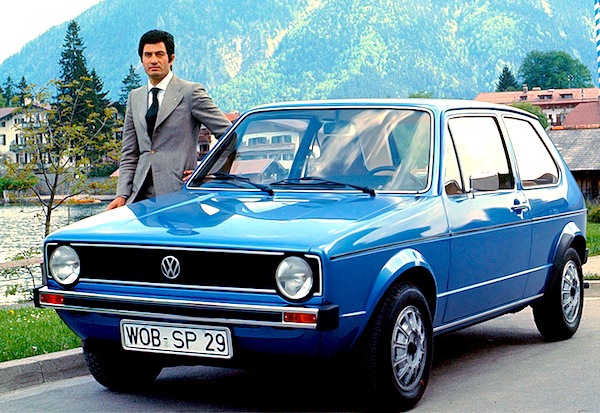
Volkswagen Golf 1974.
Turbulence and Scandal
Despite its continuous growth, Volkswagen also faced some painful setbacks. In 2015, the automotive world was shaken by the “Dieselgate” scandal, where Volkswagen was caught installing cheating software in millions of diesel vehicles to pass emissions tests in the US and Europe.
This incident caused billions of dollars in damages, led to the dismissal and prosecution of high-ranking executives, and severely damaged the brand’s reputation. Volkswagen was forced to overhaul its business and development strategies.
Instead of succumbing to the scandal, Volkswagen chose to embrace the future. They heavily invested in electric vehicles, launching the ID lineup—including the ID.3 and ID.4—with the goal of becoming the world’s leading electric car manufacturer.
By 2024, Volkswagen was one of the top automotive groups in terms of electric car production in Europe, and they are aggressively expanding into the Chinese and North American markets.

Illustration created by AI.
A Timeless Icon
Today, when people think of Volkswagen, they not only recall the legendary “Beetle” or the refined Golf, but also a brand that has continuously evolved, reinvented itself, and risen from the ashes of crises.
With over 87 years of history, Volkswagen has produced more than 150 million vehicles globally, operates in over 150 countries, employs hundreds of thousands of people, and has made significant contributions to the advancement of the global automotive industry.
It is undeniable that Volkswagen, which started as a “people’s car,” has become a “car for all ages.”
May 28, 1937—the day this iconic brand was established—will forever be etched in the annals of not just German but also human history, as a testament to the aspiration of bringing technology to the masses.
Introducing the VW Tayron – The Potential Replacement for Tiguan Allspace in Vietnam Soon
Volkswagen Tayron is the name for the upcoming replacement of the Tiguan Allspace starting from mid-2024.

